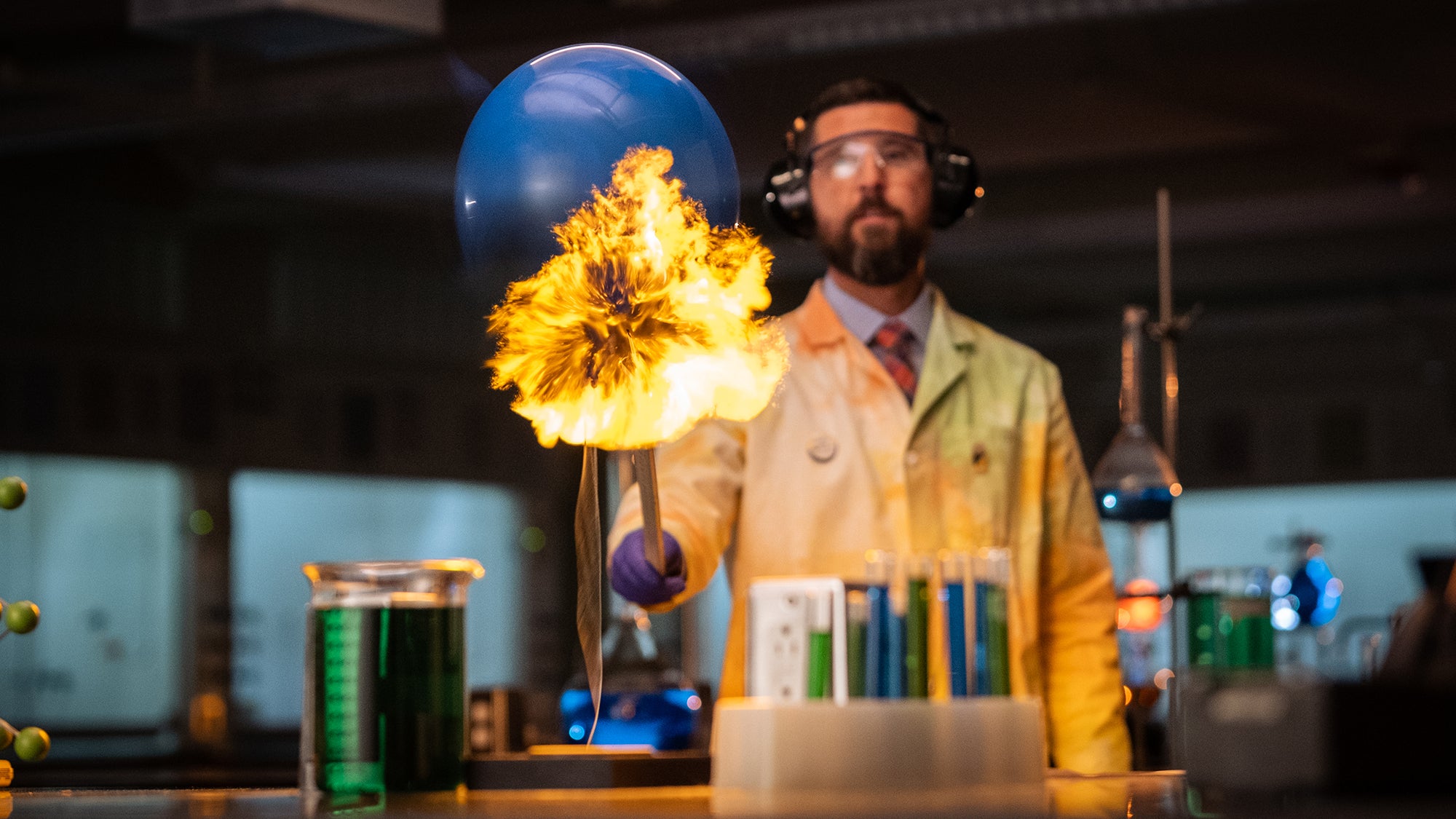
Mathematics & Natural Sciences
The Great Principles of Chemistry
9 lessons
6h total length
Create Your Account to Get Instant Access to “The Great Principles of Chemistry”
Learn how chemistry deepens our understanding of the natural world.
Lessons in this course

32:18
lesson 1
Chemistry and the Liberal Arts
Chemistry is the study of matter and the changes it can undergo. The technical knowledge gained through chemistry has provided mankind with immense power, and thus it is best studied as part of a liberal arts education.

36:21
lesson 2
The Discovery of Elements and the Periodic Table
Since the ancient Greeks, men have sought to understand the fundamental substances of matter. The discovery of the elements was advanced by the alchemists of the Middle Ages and exploded after Antoine Lavoisier set the foundation for chemistry in the late eighteenth century. The rapid gains in knowledge about matter led scientists to pursue a way to order the elements, which culminated in the development of the periodic table.

29:12
lesson 3
Atomic Theory
Beginning in the late eighteenth century, scientists undertook a series of experiments that revealed three important laws about matter: the law of the conservation of matter, the law of definite proportions, and the law of multiple proportions. John Dalton used these three laws to publish the first modern atomic theory.

26:53
lesson 4
Atomic Models
In 1897, J.J. Thomson discovered the first subatomic particle, the electron, as a result of his cathode ray experiment. Thomson’s initial model of the atom was later replaced by Ernest Rutherford’s discovery of the nucleus of an atom.

29:15
lesson 5
The Strange Behavior of Electrons
Electrons behave in some ways as particles and in other ways as waves. They do not move in fixed orbits in the way that most particles do.

20:38
lesson 6
Atomic Orbitals
The movement of electrons around the nucleus of an atom are described by wave functions associated with specific energy levels and orbitals around the nucleus. The patterns found in quantum mechanics undergird the structure of the periodic table.

24:11
lesson 7
Ionic Bonds
The outermost electrons of an atom are called valence electrons. How full an atom's outer shell of valence electrons is determines its reactivity and ability to bond with another atom. An ionic bond forms when a valence electron is transferred from one atom to another.

31:58
lesson 8
Covalent Bonds
G.N. Lewis developed the idea of covalent bonding where atoms bond together to form a molecule by sharing pairs of valence electrons. Covalent bonds occur between non-metal atoms to allow each to achieve a stable outer shell of electrons.

22:22
lesson 9
The Molecular Basis of Life
As we study the molecules responsible for life, it is also important to recognize the limits of chemistry. Science cannot answer all of life’s questions, but it can give great insight into the natural world.
Watch the course trailer
Enroll in "The Great Principles of Chemistry" by clicking the button below.
What Current Students Are Saying
The course presents complex topics in a concise and intuitive manner. More importantly it promotes wonder, beautifully conveying the depth of the subject and encouraging further investigation beyond the videos.
Create your FREE account today!
All you need to access our courses and start learning today is your email address.